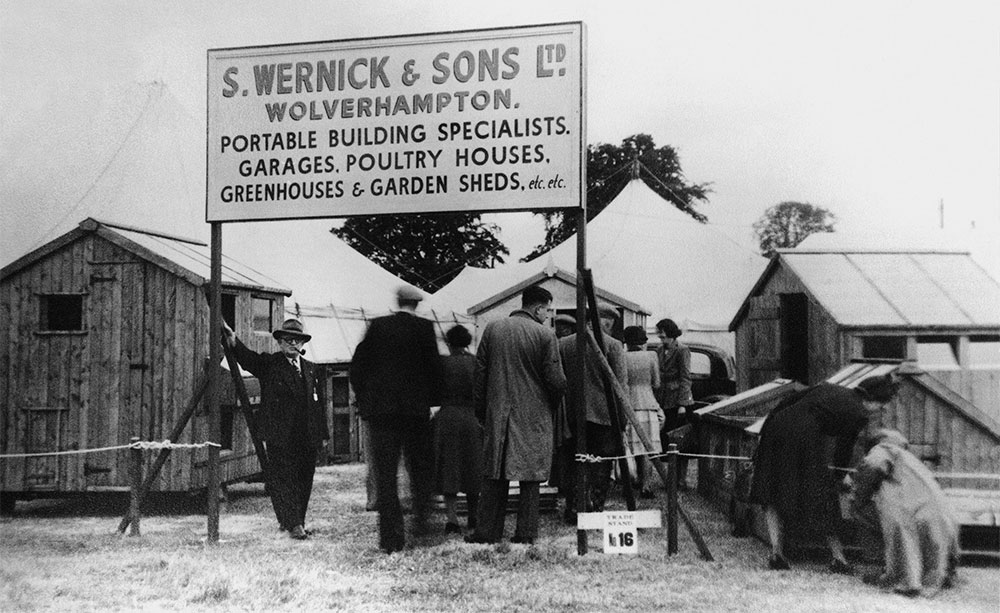By Martin Guttridge-Hewitt
Travelling via northern Sweden, we explore the potential of wooden structures to reduce carbon footprints, and ask if a new UK roadmap can finally unlock the material’s potential to drive net zero development.
It’s an early-February evening and Skellefteå is bathed in the glow of streetlights and pure white snow. Life here feels frozen in a moment, which at -15C on arrival, is completely understandable.
But appearances deceive, and this corner of the subarctic moves fast. As the region’s Market and Business Development Manager, Bo Wilkstrom tells us, specialised industries are fuelling rapid population growth, and turning this small town into Sweden’s net zero transition testbed. Authorities now have a big ambition to ‘become global frontrunner, take risks, and build a new society’ around principles of renewability and sustainability. Some people even come as tourists because they ‘want to see, want to know’ about the latest climate tech, transport, and energy developments.
Most visitors will arrive through the carbon neutral airport, which is also home to one of the world’s only electric aviation schools, using planes it is hoped will one day be the go-to modality for short distance commutes. Many take buses that run on entirely organic waste. All will use 100% renewable electricity for the duration of their time here, and the lucky ones might stay at Wood Hotel by Elite.
The second tallest timber-framed tower on the planet, this 20-storey prefabricated skyscraper also houses Sara Kulturhus, an arts venue with six stages, the largest seating 1,700 people, and a ground floor foyer doubling up as indoor public realm, serving everything from Sunday morning yoga to pre-theatre drinks, safely protected from the perishing conditions outside. Skellefteå’s municipal library is here, too.
Lumber had a huge impact on the footprint of this address. Considered among the most advanced timber buildings ever created, it absorbs more carbon dioxide (CO2) that it emits, even when all 205 rooms are occupied. In total, 12,000 m3 of wood was used, sourced from within 60km of the hotel. Forests that supplied other projects in town, like the historic Lejonströmsbron wooden bridge, dated 1737, and a modern three-storey car park made of plywood.
In Sweden, 70% of land is forest, and the timber industry is well managed and environmentally controlled. Producing 18million m3 of lumber each year, even with 13million bound for export there’s enough to produce 90% of all low-rise builds in the country. And larger scale developments are also becoming increasingly visible, like Stockholm’s aptly named Wood City.
‘There are timber buildings in London, but most have traditional steel frame and concrete core,’
Charlie Green, co-founder of The Office Group, says of the Black & White Building in an interview with Financial Times. The British capital’s tallest commercial address made from engineered timber, it has 37% less embodied carbon than it would, had denser materials, more commonly used in UK construction, been used.
Savings come from several aspects specific to structural wood. Timber is less energy-intensive to produce than concrete, and as lumber is far lighter it means shorter build times – on average 25% faster than heavier structures. As such, there are fewer journeys needed to transport the workforce and materials, less days when direct on-site emissions are produced, while particulate matter falls because there is no concrete being cut.
‘I was at a conference last week on constructing excellence in London, and completely unsolicited one of the speakers said to me: ‘the bottom line is we’ve got to use less concrete, less steel, and more timber’. That would have been my message, but for an independent procurement expert to talk like that, I think the penny has dropped in terms of benefits from timber construction,’
says Andrew Carpenter, Chief Executive of the UK Structural Timber Association. A man who clearly wants to see more wood in UK building stock, support from outside has rarely been higher.
In December, the UK Government published its Timber in construction roadmap, which aims to level up huge regional differences in the prevalence of timber buildings. In England, just 9% of new build homes have a wooden frame, go to Scotland and it’s 92%. The new plan will also help deliver on a legally binding target of 16.8% forest cover in England by 2050, helping support habitat recovery and reverse the country’s shocking biodiversity crisis.
Several steps are critical to meeting the objectives. These include improving data on timber and whole life carbon to ascertain more details on true benefits, promoting and improving access to sustainable and safe products, including ‘free from’ timbers which overcome indoor air pollution issues linked to certain glues and solvents, facilitating closer collaboration between stakeholders, and innovating new high performance construction systems.
‘After COP26 in Glasgow, the UK Government, headed by DEFRA, set up a working group to increase the amount of timber in construction because they recognise that if the UK is to meet its net zero target, construction materials must be a priority,’ explains Carpenter, who is now secretariat to the roadmap process, representing the timber industry. ‘Now there is a clear route, and we’re only a month or two in but the commitment Government is showing is first class.
‘I’ve put together the planned process to manage implementation and they seem to be behind that, so it’s early doors but the signs are good,’ he continues. ‘Other sectors [outside housebuilding] are also looking at timber. So, there is desire from the Department of Education to use timber in its school-building programme. The health sector is looking at timber for hospitals, we’re really beginning to see a lot of areas start to consider this frame as an option.’
Other parts of the economy – such as hotels and student accommodation providers – have longer histories with timber, although it’s only relatively recently the material fell out of favour with English developers, and buyers. A 2018 report in UK Construction Online suggests the market was growing pre-pandemic, but still hadn’t recovered from a huge crash in the 1980s driven by negative reports about quality and safety. The timber construction sector plummeted from 40% of new build market share to less than 10% in a single year, only reaching 28% again in the last decade or so. Faith is gradually being restored through hard evidence.
‘The first question that is often asked of us is around fire safety,’ Carpenter replies when we quiz him on concerns people might have with using structural timber. ‘We have significant results, for both timber frame and more recently CLT [cross-laminated timber], which show if a building is designed properly and built properly, in accordance with best practice, there’s no reason there should be any more fire risk than with other materials.
‘Cost is probably the second objection. But an independent test carried out by a quantity surveyor, RLB, looking at social housing developments, found timber frames were actually 1% cheaper than alternatives, and 19% faster to finish. Similar research has found it to be 2% cheaper, but the reality is on price materials are almost like-for-like,’ he continues, before revealing this data is now being expanded. ‘As part of the new roadmap the Government has asked us to do a more comprehensive cost comparison, broadening the scope beyond social housing alone, so that should be interesting to see the results.’
In a world without silver bullets, Carpenter is clear that timber alone will not solve the quandary of how to continue making new buildings while protecting the planet and our atmosphere. So while ‘an ideal world’ for him might involve completely substituting concrete and steel, he says this is unlikely to prove practical. Instead, it’s as much about bringing more wood into the mix as it is pushing a ‘timber first policy’. Simply put, ‘you must choose materials appropriate for the given solution’.
‘We know there are going to be several barriers along the way, challenges that will need to be overcome. We’ve broken this down into seven working groups dealing with supply, demand, carbon, building safety, insurance, skills, and innovation. For the last two years we’ve had working groups looking at each of these, and that fed directly into the roadmap,’ Carpenter continues. ‘We’ve had industry experts involved every step of the way; you know?
‘From RIBA to the HSE, Home Builders Federation, the timber sector, wider industry, and so on. Nothing has been done in isolation. It’s been done with government departments, trade, but also the wider sectors,’ he adds. ‘So, I don’t think we’ve missed anything. The important thing now is we have a number of recommendations, some for government, some for industry, some for both. For me, it’s a question of ticking them off one by one and agreeing a plan for each to implement their steps.’

Of course, the outcome of the roadmap will only become apparent over the course of several years, but Downing Street clearly needs this program to deliver for many reasons. Not least tackling the 25% of total national greenhouse gas emissions that come from Britain’s built environment, bolstering efforts to increase tree cover in a country that’s among the world’s most biodiversity-depleted, and increasing the supply of new housing stock to help mitigate what now feels like a crisis in perpetuity.
It all seems like a win-win, but to be truly effective implementation must be focused on long term outcomes. Like growing a sustainable domestic industry, taking full advantage of the predicted rise in demand driven by this new Government initiative. And investing in improving and expanding the available workforce, with staff shortages currently the biggest non-climate challenge facing construction as a whole.
Perhaps most importantly, though, this roadmap must be met by a willingness to stay committed on all sides of the political sphere, or we risk taking two steps forward, and one step back, repeating the vicious cycle of false starts and abandoned ideas which has plagued environmental policy in the UK and globally. The outcome of which has been precious time wasted, squandered opportunities, and financial black holes. Patterns we can ill-afford to repeat.
Source: Environment Journal









